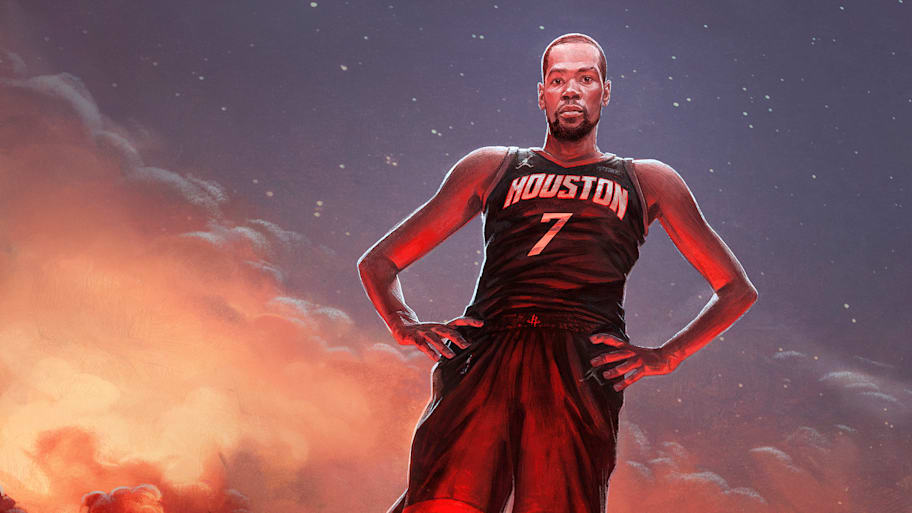Last May, as Rockets players shuffled across the locker room following a Game 7 loss in the first round to the Warriors, frustrations were palpable. By any metric, the 2024–25 season had been a success. The team won 52 games (up from 41 a year before) and made the postseason for the first time since 2020. The roster was teeming with young talent, guaranteeing that Houston, which had not been relevant since James Harden’s acrimonious exit nearly five years ago, would contend for years to come. In that moment, none of it mattered. “I thought we could beat anybody,” says Amen Thompson. “I was confident.” He pauses. “Maybe too confident.”
That confidence extended up the bench. In three seasons as a head coach, Ime Udoka had established himself as something of a wunderkind. He led the Celtics to the NBA Finals in his first—and only—season in Boston. He engineered a 19-win improvement in his first year in Houston. Last season, the Rockets finished with the second-best record in the West. Failure is a part of the process for every young team. But as good as Golden State was—and with Stephen Curry, Jimmy Butler and Draymond Green the Warriors were perhaps the greatest No. 7 seed ever—the 48-year-old coach believed his team could beat them. “We had what it took,” he says. Addressing his players after the 103–89 loss that ended their season, Udoka’s message was simple: Don’t be content with just making the playoffs. Everyone—coaches included—needs to come back better.
Still, Udoka knew: There was a decent chance this would be the last time this group was together. For months, Houston had been engaged in trade talks with Phoenix for Kevin Durant. For nearly a year, executives from the Rockets and Suns had swapped proposals. They talked before the trade deadline. Nothing materialized. The Suns wanted the kind of players-and-picks haul they traded away to Brooklyn for Durant in February 2023. Houston had a budget for what it would give up, and it wasn’t going to go over it. “We weren’t shopping anybody,” insists Udoka. “We were on that same page that we wouldn’t overreact to one series. We knew some things could be available. But we planned on running it back.”
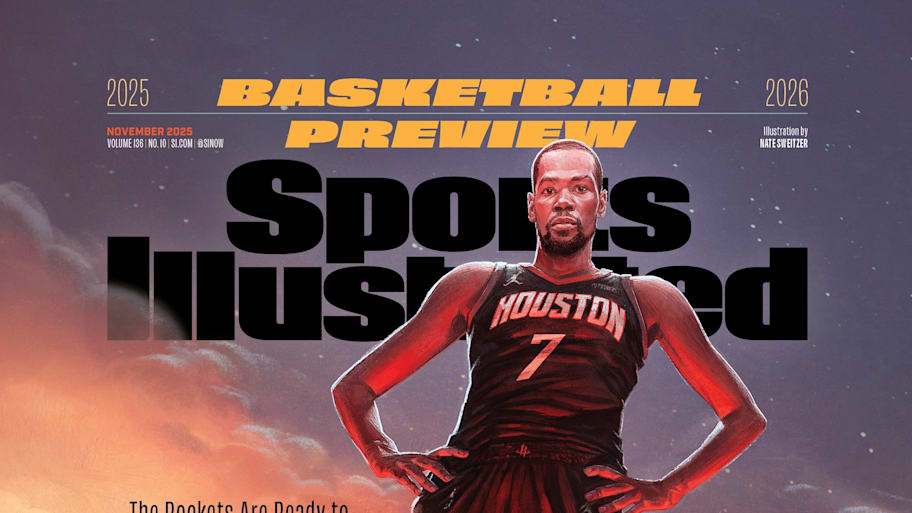
It’s a fine company line, but those who know Udoka insist—he wanted Durant. Their history dates back to Udoka’s playing days, when Udoka was a sturdy, 6' 6" forward in San Antonio trying to figure out how to slow down this slim, 6' 11" scorer who played the same position. In 2016, when the Spurs made their pitch to Durant in free agency, Udoka was part of the group San Antonio sent to deliver it. The relationship deepened during the 2020–21 season, when Udoka served as an assistant in Brooklyn, and more when he took a coaching role with the U.S. Olympic team. The playoffs exposed the Rockets’ need for half-court scoring. Durant is among the very best at it. “Obviously what he does on the basketball court,” says Udoka, “fits with what we need.”
Weeks into the offseason, though, there was no deal. Phoenix wanted Houston to sweeten its offer. The Rockets weren’t budging. Rafael Stone, Houston’s general manager, understood Durant’s value. Durant was 36, and though his game was aging well—he averaged 26.6 points per game for the Suns last season, connecting on 43% of his threes—he was 36. If the deal didn’t work out, Stone wanted to have enough assets left to be able to swing another.
And he knew he had leverage. With one year left on his contract, Durant had the power to cool the market. If he didn’t want to be somewhere, no team was going to surrender anything significant to get him. And Durant wanted to be in Houston. Days before the draft, the two sides reengaged. Phoenix, unable to drum up a better offer, was ready to accept what the Rockets had on the table.
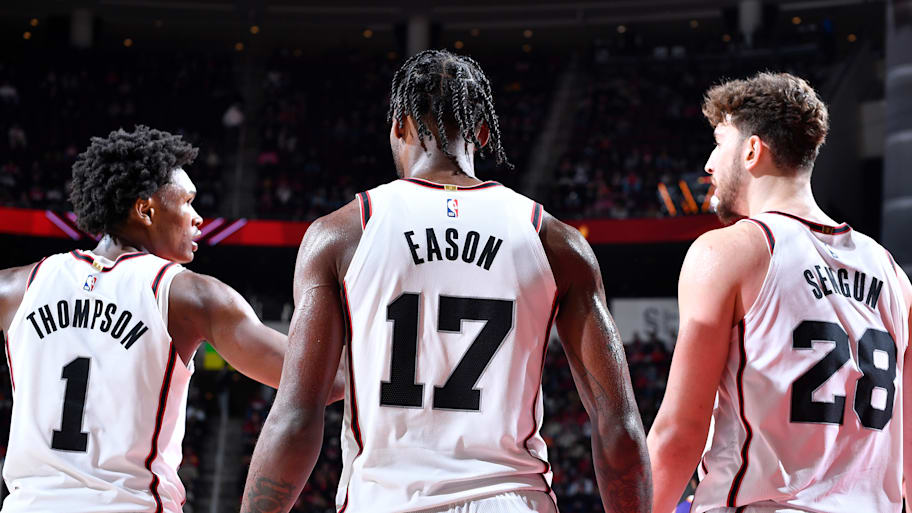
In early conversations with Durant, Udoka sensed the excitement. The end for Durant in Brooklyn was difficult. His two and a half seasons in Phoenix were uninspiring. Houston offered something Durant coveted most—a chance to compete. “I think he just saw an environment that he might not have had in his last few places,” says Udoka, “and wanted to be part of it.” Indeed, internally the Rockets wondered: If Durant was that good in those situations, just how good can he be in this one?
“I wanted to retire in Phoenix.” It’s mid-September and Durant arrives for an interview shortly after a workout at the Rockets’ practice facility. It’s Durant’s first day back, having spent the summer ping-ponging around Europe. “It’s a different vibe over there, man,” says Durant, a sweatsoaked Rockets T-shirt clinging to his chest. Very, especially when your itinerary includes tagging along with Drake on the rapper’s nine-country tour. There’s a lot to get to with Durant. The how he got to Houston, the why he wanted to be here. First, though, Durant wants to emphasize something: The ending in Phoenix bothered him, too. “I really had good intentions when I stepped foot in there,” he says. “The picture in your head doesn’t always come to fruition.”
This one didn’t. Expectations were sky-high when the Suns acquired Durant, pairing the former MVP with Devin Booker, the homegrown star just two years removed from leading Phoenix to the Finals. Months later, the Suns swung another deal, acquiring Bradley Beal. The shake-up left the team with a formidable Big Three … and little else. With a top-heavy rotation, Phoenix was swept out of the first round in the trio’s first full season. It missed the playoffs entirely in the second.
A postmortem could trace the failure back to the Durant deal. Specifically, what Phoenix gave up—Mikal Bridges, Cameron Johnson and four unprotected first-round picks—to get him. Durant doesn’t buy it. “I feel like I can make up for anything,” he says. “Whatever you’re losing.” The Beal trade further limited Phoenix’s ability to address what Durant says was the real problem: a lack of frontcourt muscle. “From a basketball standpoint, I felt like our best lineups were me at the five with four guards that were under 6' 5",” he says. “That’s a horrible formula to win basketball games at a high level, especially when teams are consciously getting bigger. I think we can speak on a mental aspect of the game as much as we want, but I think that physical aspect of the game is why we weren’t successful as a team.”
There’s no bitterness in Durant’s voice. He made his peace with the Phoenix failure long ago. When the season ended—maybe a little before—Durant “canvassed the league” for good options. He wanted to play for a contender. Houston checked that box. He didn’t want the team trading for him to have to gut its roster. The Rockets, armed with movable contracts and draft capital, ticked that box, too. And, says Durant, “I wanted to go back to Texas.”
It has been nearly two decades since Durant lived in the state, back when he was a stringy 18-year-old who had rarely ventured out of the mid-Atlantic. Austin, where Durant enrolled at the University of Texas, was “a culture shock.” The D.C. Metro was replaced by car pools in pickup trucks. Instead of mumbo sauce, barbecue. The regular family dinners. “Southern hospitality,” says Durant, “is a real thing.” The months he spent left a lasting impression. “It was a huge part of my DNA,” says Durant. “That was probably the most enlightening year of my life.”
Something else: The Rockets wanted him. “I think other teams valued growing their younger players and draft picks,” says Durant. “I’m a veteran, [now] 37 years old, with a high price tag. Not a lot of people in the league wanted to make that move to change the franchise and add me to the equation.” Udoka did, certainly, and Durant admired how the coach yanked Houston out of the ashes of the Harden era. Udoka, says Durant, “is just real and to the point. There’s no sugarcoating.” On Houston’s staff are Royal Ivey and D.J. Augustin, Durant’s teammates in Oklahoma City. “I felt like this team is on the brink of being a consistent playoff team,” says Durant. “I wanted to be a part of it.”
A part. Durant sees what you do: A team that struggled in isolation offense—the Rockets ranked in the bottom third of the NBA in points per possession in isolation and in scoring generated in the half court—is adding one of the greatest one-on-one scorers in NBA history. But he believes he can contribute much more. He sees his rebounding and shot blocking making an impact. He sees his leadership influencing one of the NBA’s younger locker rooms. He sees his versatility as a fit on a team that finished fourth in defensive efficiency last season. Udoka has toyed with the idea of playing Durant at two guard, part of a jumbo lineup featuring two centers (Steven Adams and Alperen Sengün) and 6' 11" Jabari Smith Jr. No small-ball issues there.
And he sees a team he doesn’t have to carry. Thompson was All-Defensive first team last season and is widely considered a future All-Star. Sengün was an All-Star and is fresh off a breakout performance at EuroBasket. Smith, Tari Eason and Reed Sheppard have room to grow. Adams and Dorian Finney-Smith are veterans with postseason experience. For Durant, it creates “a margin for error.”
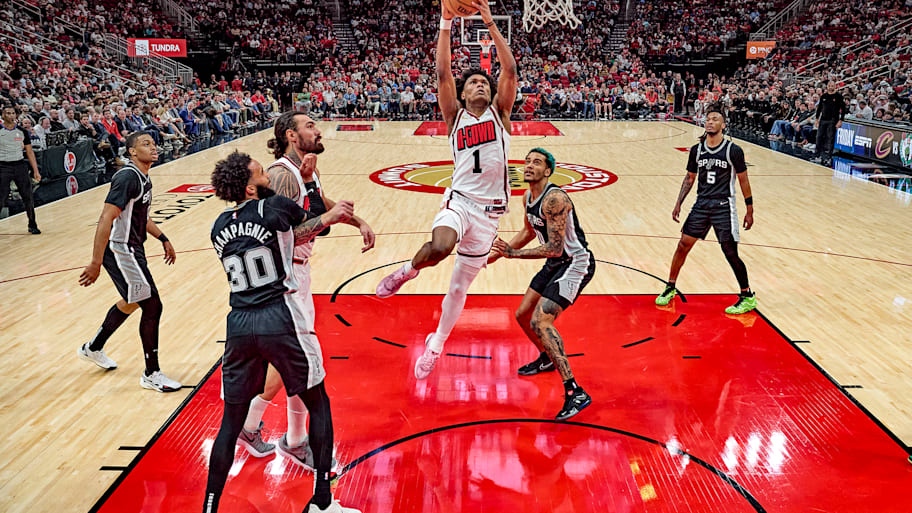
“In Phoenix, everything had to work perfect for us,” says Durant. “I felt like when we played well, we could compete with anybody in the league. But the great teams, they could make a couple of mistakes and their talent from top to bottom could mask that a little bit.
“We didn’t have that type of room for error. And that was a little frustrating. It’s not a bad place to be. I felt like we had a chance every night with the talent that we had, but I wish we had a little bit more room for mistakes. If you turn it over here, give up a rebound there—we couldn’t allow that at all in Phoenix, so that was tough to deal with.”
In Houston, the talent pool is both deep and diverse. Durant watched it develop the last two seasons. Not in a can’t-wait-to-get-there kind of way. “I saw them as possible playoff [opponents],” says Durant. But he saw the skill. The execution. The relentlessness. “Stuff that championship teams do,” he says. Now that he’s here, he’s eager to do whatever it takes to make them one. “I’m looking forward to just playing as freely as I can,” he says. “And having some fun.”
Thompson has never played with Durant. He has played for Durant. At 14, Thompson played for Durant’s AAU team in a one-off experience. Then, in 2018, when Durant was with the Warriors, he chartered a plane for Thompson’s AAU team at the time, Vision Sports Academy, to travel from Oakland to Las Vegas, handing out mock SLAM magazine covers with the players’ faces on it. Eason wore Durant’s shoes in high school and was glued to documentaries featuring him. “For almost as long as I can remember and knowing basketball and watching basketball,” says Eason, “I’ve known about Kevin Durant.”
Udoka is fine with the team admiring Durant, just not revering him. When the Rockets faced teams with superstars, Udoka pushed his players to believe they were equals. “It was always, ‘Don’t take a backseat to anybody,’ ” says Udoka. “Attack them and guard them the other way like they’re a regular player.” With Durant, he wants a similar approach. “It’s not the Kevin Durant Show because he’s here now,” says Udoka. “The biggest growth is going to come internally, from our young guys.”
For his part, Durant is eager to help. Last summer, Smith resolved to develop his one-on-one game. After the trade went down, Smith linked up with Durant in Houston for some individual workouts. No better model for a near 7-foot would-be isolation scorer than the greatest near 7-foot iso scorer who ever lived. Smith marveled at the precision of Durant’s movements, his attention to detail, how every shot he took was at game speed. “He’s a perfectionist,” says Smith. “That really rubs off on you.”
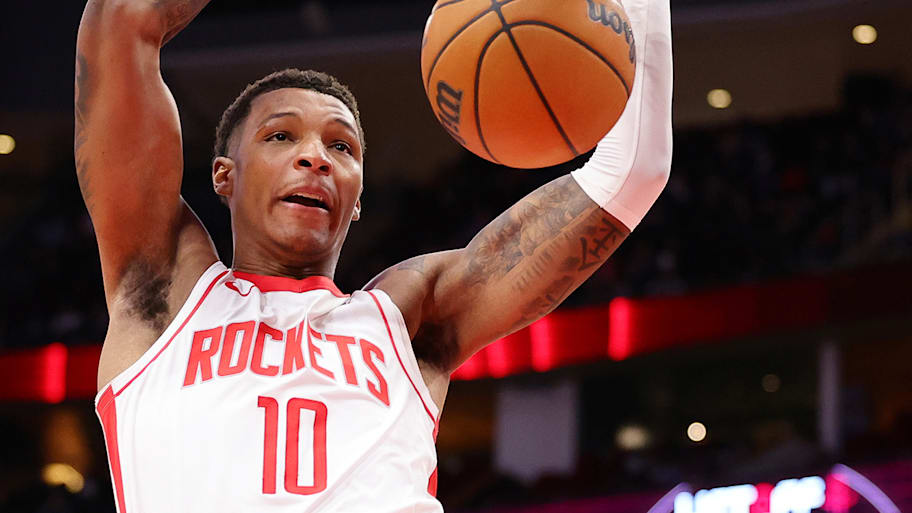
Durant embraces being the elder statesman. “Somebody who asks questions and wants to be guided, I get a joy out of that,” says Durant. In the aftermath of Fred VanVleet’s torn right ACL—an injury that will likely keep the 31-year-old guard out for the entire 2025–26 season—Durant will have to assume an even larger leadership role. In Thompson and Sheppard, the No. 3 pick in the 2024 draft, Houston has the talent to replace VanVleet. It just needs to be molded.
It’s a job, Durant says, he hopes he has for a while. If Phoenix was where Durant wanted to retire, now that’s Houston. He’s not looking for the next stop. He wants this to be his last stop.
“I’m looking to be here as long as I can, play my last years of my career,” says Durant. “That’s the intent. I know, I said that about Phoenix, too, but that’s the intent. I would love to do that. I mean, I’m 37 years old and I’m going on 19 years in the league. I want to be solidified in a spot and build with a team with a group of guys that’s going to be around for a while. So hopefully this is it.”
Durant is careful not to put a clock on his career. Mostly because he doesn’t see one. He’s completely recovered from the blown Achilles that cost him the 2019–20 season. He played 75 games for the Suns two seasons ago. He averaged 36.5 minutes per game in the last one, when a variety of injuries limited him to 62 appearances. The 43% he shot from three was his best in a full season. He spends three or four hours in the gym in the morning, with recovery and film study in the afternoon. “There’s a lot of stuff that I cut out as I got older,” says Durant.
As Durant has aged, he has studied athletes who have achieved longevity. Vinny Testaverde, who retired from the NFL at 44. Vince Carter, who retired at 43. Alexander Ovechkin, who is still dominant at 40. He does what he calls “small dives” on their careers, reading articles, watching interviews, anything that might offer insight into their secrets. “Guys that play that long and kept that mental stamina and physical stamina to come in every day and want to get better, I mean you can’t beat that,” says Durant. “It’s inspiring. You got to respect that.”
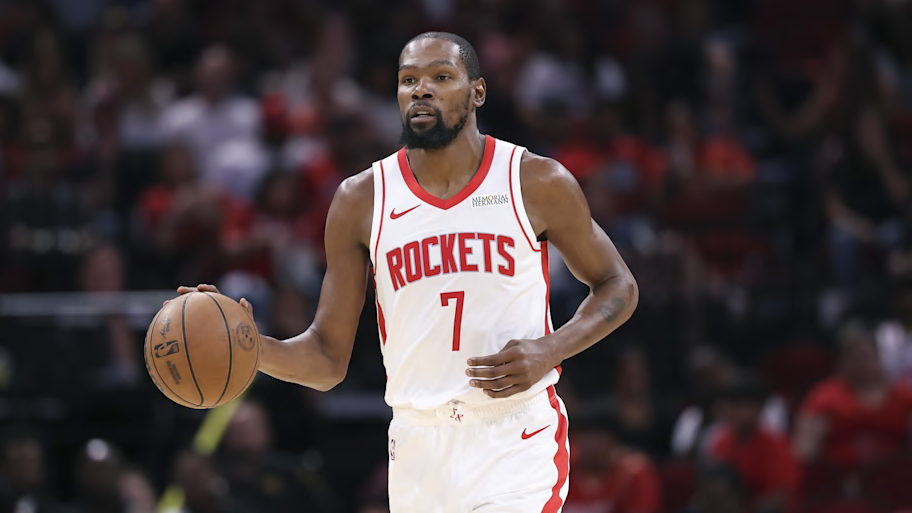
In a way, Texas is where Durant’s career began. It’s where he first discovered himself as a scorer. “I just wanted to make it to the league,” he says. He never dreamed of a two-decade career in the NBA, and despite racking up 15 All-Star appearances, two championships and an MVP, he’s in no hurry to leave.
“I always want to be at that elite level, but when you’re in your 40s, I mean you might as well just commit to playing till your wheels fall off,” says Durant. “You might as well just maximize that time period. I’m getting older but I just feel like I got a lot to look forward to. I feel like I’ve done a lot as well. I’m content, but I want more, as weird as that sounds.”
Not in Houston. After hearing of the trade, Thompson asked his parents to dig up the SLAM cover and send it to him. “Full-circle moment,” says Thompson, smiling. There will be time for the Rockets to get any Durant awe “out of their system,” says Udoka. After that, it’s time to work.
More NBA on Sports Illustrated
Listen to SI’s NBA podcast, Open Floor, below or on Apple and Spotify. Watch the show on SI’s YouTube channel.
This article was originally published on www.si.com as Kevin Durant and the Rockets Both Had a Plan. Here’s How the NBA’s Perfect Fit Finally Came Together..
